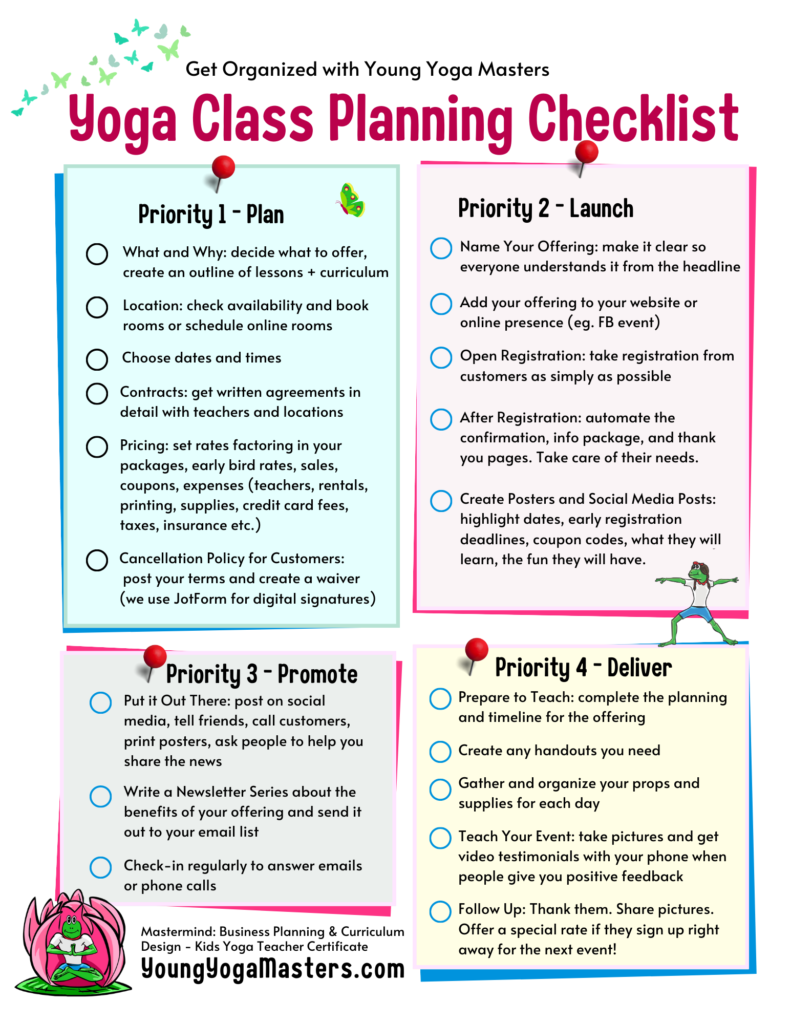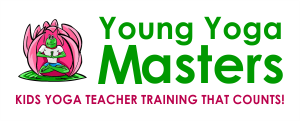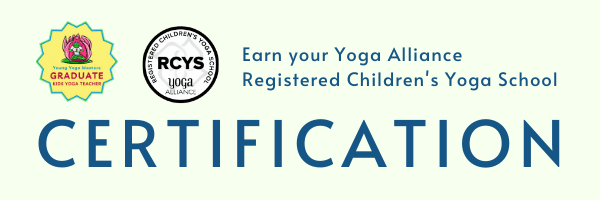When you’re running your business, you’ve got a lot on your plate.
Like a couple of weeks ago when I wrote in my newsletter that registration would open for the children’s yoga teacher training next week. A week felt like enough time to get everything done.
The next week came and went.
Then the week after came and went too and the registration still wasn’t open.
What I thought would take one week ended up taking almost three! Three courses were actually a bundle of 24 smaller courses, each needing updates to the sales page, curriculum, checkout page, and thank you page. That’s 24 courses x 4 pages per course which means almost 100 pages! And it didn’t even include any promotion or planning of the event.
This is probably more than average, the back end of planning a yoga class, camp, or training is significant.
Standard Operating Procedures
While planning, I used one of my checklists of standard operating procedures (SOP’s) to help.
The list was long. There were a lot of little details and it helped me make sure I didn’t miss any of them.
Today I’m sharing a general version of my checklist because I think it will be helpful for anyone doing this kind of planning.
We also talked about this in the February mini-training on Thursday. February 9. If you’re curious about the mini-training, watch it here.
Three Big Takeaways From This Checklist
- Don’t plan the details of exactly what you will teach till after you open registration. Most of the work happens in the planning, launching, and promoting part of the event. The fun part is when you get to teaching the event or delivering the series. Plus I don’t put energy into those details till I know I have enough interest and the event is going to run. For me creating my timeline is the last thing I do.
- Save your work! This way when you offer a camp or training or a series again, you have a foundation to build on. You can just go in and change dates and times. Organizing yourself with files and clear titles will save you a lot of time in the future.
- Price your offerings high enough to have a sale. Don’t base your price solely on the time you will spend teaching. You have to include the time organizing, preparing, and promoting your training. The price needs to cover the hours of work that have happened behind the scenes. When you’re self-employed, you won’t be able to sustain a business if you don’t get paid for the back-end work. Price accordingly keeping in mind that the next time you offer it, it will be less work.
Get the Checklist

We talked about this a lot more in the February mini-training. If you’ve got a Class series or a kid’s yoga camp in the back of your mind, these checklists can really help. Grab the checklist by clicking the button below.

